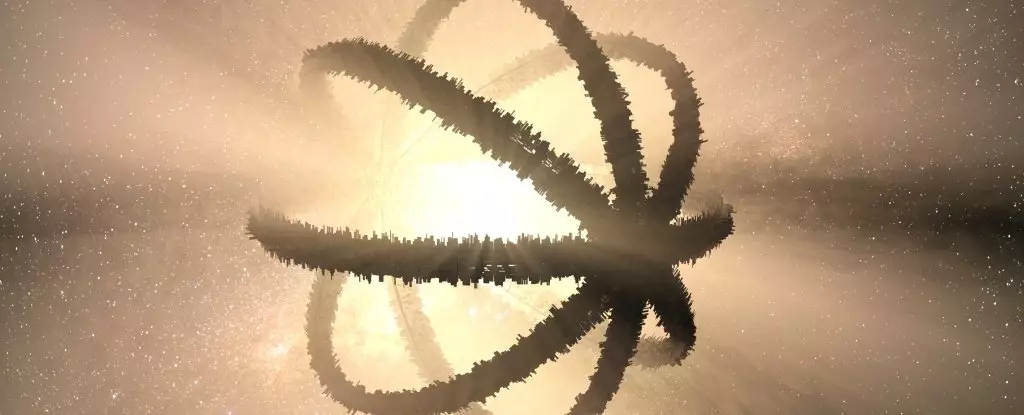The concept of Dyson Spheres has long captured the imagination of scientists and science fiction enthusiasts alike. Recently, seven stars have been identified as potential candidates for these megastructures. These stars emit most of their radiation in the infrared wavelengths, leading some to speculate that they could be surrounded by a network of spacecraft harnessing the star’s energy. However, a new paper suggests a slightly less exciting explanation – dust obscured galaxies.
The idea of a Dyson Sphere was first proposed by Freeman Dyson in 1960. According to Dyson, advanced civilizations could potentially build power collectors and habitats around a star to utilize its energy. Eventually, this infrastructure would encompass the entire star, creating a signature detectable as an excess of infrared radiation. The recent findings of Project Hephaistos identified seven M type stars out of a sample of 5 million stars detected by the Gaia satellite.
The research team led by Tongtian Ren delved into the findings of Project Hephaistos. They cross-matched data from the Very Large Array Sky Survey (VLASS) and various other radio surveys to search for radio sources near the positions of the candidate stars. Three of the candidates – A, B, and G – were found to have radio sources nearby, indicating a possible connection to distant galaxies obscured by dust.
Extragalactic Phenomenon
Candidate G, in particular, displayed a spectrum consistent with a radio loud active galactic nuclei with superluminal jets. This suggests that these candidates are more likely to be distant galaxies or quasars emitting large amounts of radiation. The presence of dust clouds around these objects could explain the excess of infrared radiation detected.
While three candidates showed radio sources nearby, the remaining four candidates did not. This does not rule out the possibility of them being dust-obscured galaxies, but it does indicate the need for higher resolution radio surveys. Despite the lack of concrete evidence, the search for Dyson Spheres and other megastructures around stars continues.
The recent findings shed light on the potential explanations for the observed excess of infrared radiation around certain stars. While the idea of Dyson Spheres remains a tantalizing prospect, the current evidence points more towards extragalactic phenomena such as dust-obscured galaxies. Further research and observations will be necessary to fully understand the nature of these intriguing candidate stars.


Leave a Reply